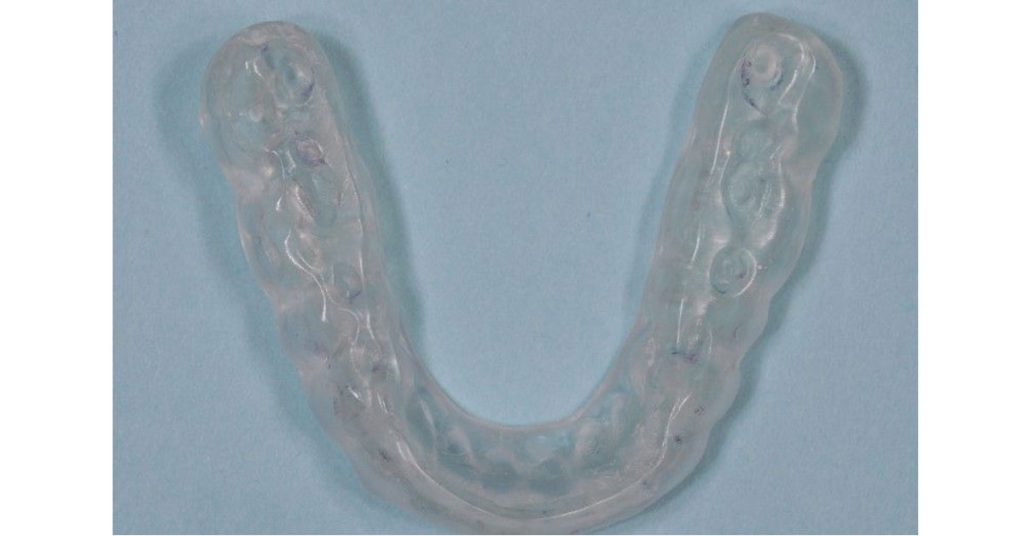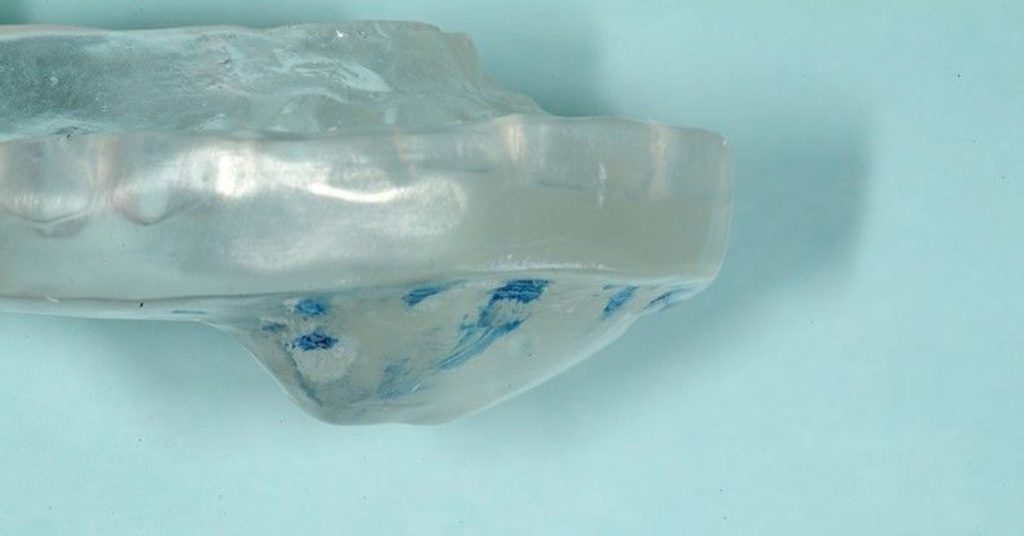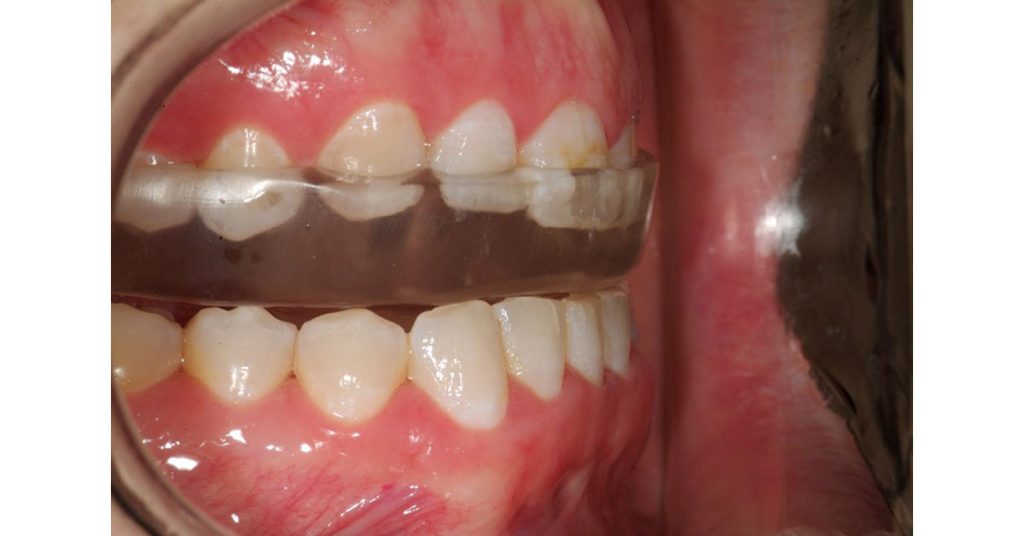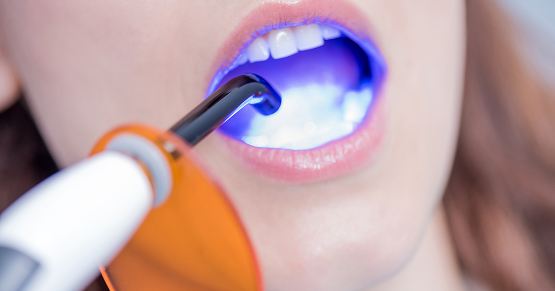Anterior Repositioning Appliance: The Night Guard You Never Heard Of
With the introduction of the Seattle Protocol, dentists can provisionally determine the biologically optimal occlusal appliance for each patient. The final appliance has been tested intraorally before final fabrication (read my “Choosing the Correct Nightguard: Let the Patient Decide” article for more details).
The ideal final appliance can come from any of the five major categories: stabilizing splint, anterior repositioning appliance (ARA), dual arch, dual arch ARA, and mandibular advancement splint. As such, providers must become more aware of splint designs that are not traditionally discussed in dental school. This article will describe the anterior repositioning appliance — an extremely successful splint design you have probably never heard of.
Aspen Appliance

The anterior repositioning appliance was first reported in dental literature in 1951.1 That splint design covered the molars and premolars of the maxillary teeth with a palatal bar connector. The opposing teeth had small indentations in the acrylic, anteriorly directing the maximum intercuspal position.
The goal was repositioning a displaced temporomandibular joint disk into a normal load-bearing position. After healing, it was believed that the recaptured condyle-disc relationship could be walked back into the fossa and maintained by adjusting the biting surfaces of the ARA. Since then, the designs have varied, but the dental goal of normalizing the condyle-disc relation remains the same.
In cases when the disk is recaptured with an ARA, it can eliminate pain and dysfunction. The literature is replete with evidence that ARAs have significant advantages over our traditional splint designs in those cases.2
However, the proof is limited that walking the position back without orthosis is possible. One study demonstrated 100% recapture of the disk on the ARA, but only 40.6% maintained that relationship once splint therapy was discontinued.3
There are two main mechanical concepts for choosing the bite position for disc recapture: clinical and imaging. Clinical techniques include biting on a thickness of tongue depressors far enough protrusively to eliminate the click. The mandible is then retruded just before the click. The patient holds at that point, and bite registration is injected between the posterior teeth.
Farrar Appliance

This method is 70% effective at capturing displaced disks without the aid of imaging.4 Utilization of an arthrogram, CT scan, and MRI improves the results in recapturing with an ARA.5 Of 56 patients fabricated an ARA using clinical references, 26 had discs that remained displaced. Those 26 had arthrograms to assist in guiding proper bite positioning. The image-guided splints were successful in recapturing discs in 22 of 26 patients. Using MRIs to determine effective positioning allowed a 96% recapture rate.
Disc recapture is the mechanical goal of an anterior repositioning splint. There are, however, airway advantages to the design, as well. The ARA has proven to be a valuable orthotic for patients presenting maxillary hypoplasia and nasal incompetency. Biologically, the 3.0 mm advancement of the protocol device has been proven to significantly reduce nasal resistance, increase nasal patency, and improve the critical closing pressure of apnea patients. Females are more responsive to these minor protrusive alterations.
Why was I not taught about the ARA? This technique is not taught more often because once the patient has been maintained in a subjectively pain-free and airway favorable position for 3–6 months, their maximum intercuspal bite may change due to condylar remodeling. If so, their bite may need to be addressed orthodontically or restoratively to eliminate the need for the orthosis.6
These changes have only been observed in studies with 24/7 wear for a minimum of three months, or in studies where the ARA is defined as a dual arch, mandibular advancement device worn at night as a sleep appliance. Even though nighttime wear of a single-arch orthosis has not been reported to alter the maximum intercuspal position, the protocol recommends daily morning repositioning of the bite with an AM Aligner (see Seattle Protocol Step 5: Dual Arch Anterior Repositioning Splint video lesson for details).

Additionally, while ARA therapy followed by orthodontics to mimic the new bite has proved effective long-term, partial use of the appliance can provide symptom relief and negate the occlusal alterations seen with full-time utility.7
While it may be unfamiliar to many practitioners, the ARA design has a long, positive history. The literature is replete with evidence of its mechanical and biologic advantages. The Seattle Protocol allows practitioners to provisionally determine if the anterior repositioning appliance is appropriate before final fabrication.
References
- Ireland, V. E. (1951). The problem of “the clicking jaw”.
- Lundh, H., Westesson, P. L., Jisander, S., & Eriksson, L. (1988). Disk-repositioning onlays in the treatment of temporomandibular joint disk displacement: comparison with a flat occlusal splint and with no treatment. Oral Surgery, Oral Medicine, Oral Pathology, 66(2), 155-162.
- Chen, H. M., Liu, M. Q., Yap, A. U. J., & Fu, K. Y. (2017). Physiological effects of anterior repositioning splint on temporomandibular joint disc displacement: a quantitative analysis. Journal of Oral Rehabilitation, 44(9), 664-672.
- Kurita, H., Kurashina, K., Baba, H., Ohtsuka, A., Kotani, A., & Kopp, S. (1998). Evaluation of disk capture with a splint repositioning appliance: clinical and critical assessment with MR imaging. Oral Surgery, Oral Medicine, Oral Pathology, Oral Radiology, and Endodontology, 85(4), 377-380.
- Simmons III, H. C., & Gibbs, S. J. (1995). Recapture of temporomandibular joint disks using anterior repositioning appliances: an MRI study. CRANIO®, 13(4), 227-237.
- Liu, M. Q., Chen, H. M., Yap, A. U. J., & Fu, K. Y. (2012). Condylar remodeling accompanying splint therapy: a cone-beam computerized tomography study of patients with temporomandibular joint disk displacement. Oral Surgery, Oral Medicine, Oral Pathology and Oral Radiology, 114(2), 259-265.
- Conti, P. C. R., Miranda, J. E. S., Conti, A. C. C. F., Pegoraro, L. F., & Araújo, C. D. R. P. D. (2005). Partial time use of anterior repositioning splints in the management of TMJ pain and dysfunction: a one-year controlled study. Journal of Applied Oral Science, 13, 345-350.
SPEAR ONLINE
Team Training to Empower Every Role
Spear Online encourages team alignment with role-specific CE video lessons and other resources that enable office managers, assistants and everyone in your practice to understand how they contribute to better patient care.

By: Jeffrey Rouse
Date: November 4, 2019
Featured Digest articles
Insights and advice from Spear Faculty and industry experts


